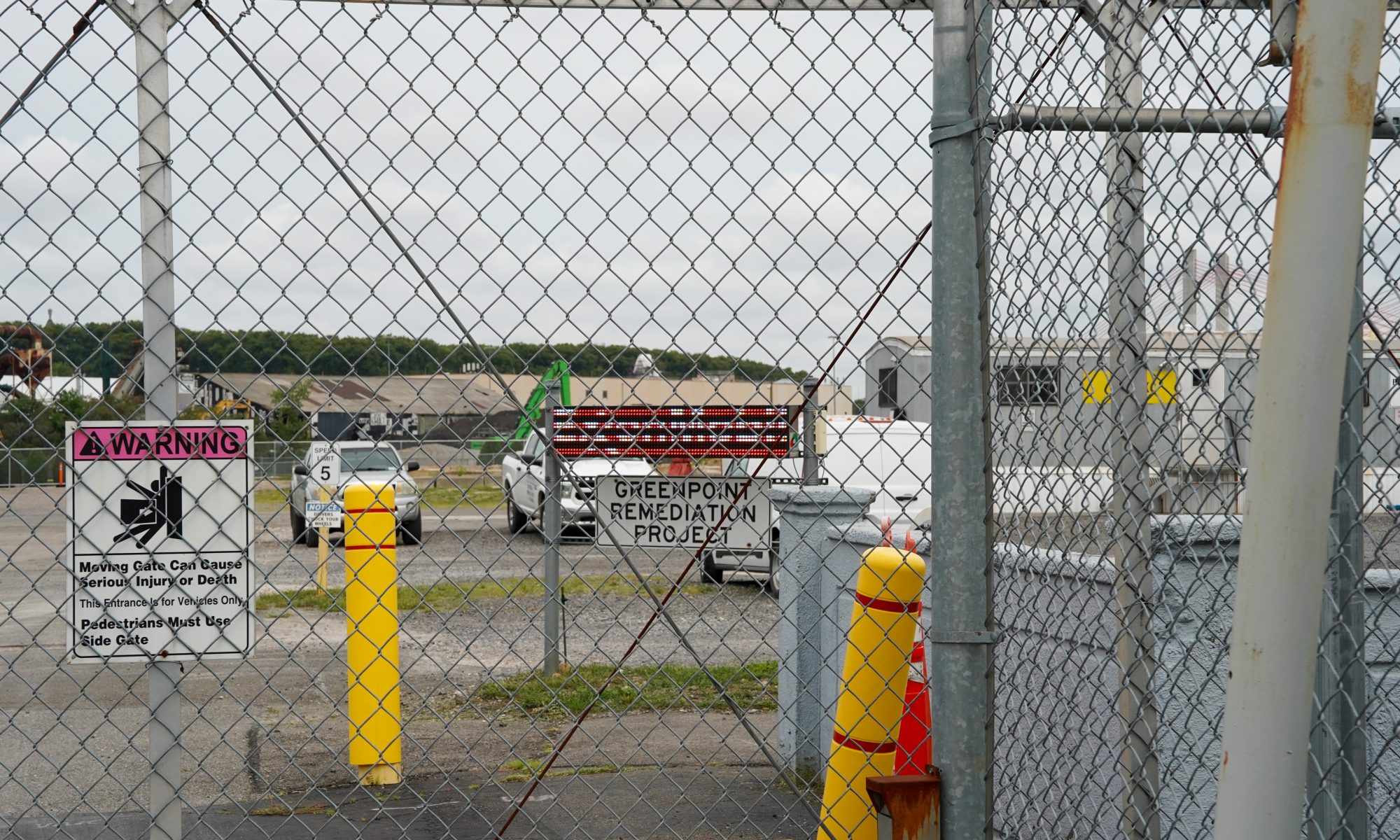By Jean Brannum | jbrannum@queensledger.com
ExxonMobil Corporation and environmental consulting company Roux held its second public hearing on the consolidation of its groundwater treatment plant plans on July 18, and most of the public comments were directed at the future use of the land.
Community advocates, some who have commented multiple times on the plans, grilled ExxonMobil employees on the use of the potential old plant sites.
ExxonMobil has two groundwater treatment plants, but the oil company wants to consolidate the plants into one, according to a fact sheet from Roux. Public liaisons for the company said in a presentation that the treatment plants would be able to run more efficiently and that the project would include adding updated equipment that would last throughout the entire remediation process. The two plants are at 400 Kingsland Avenue and 5 Bridgewater St. The new plant will be at 38 Varick St.
The company has to apply for a State Pollutant Discharge Elimination System (SPDES) permit modification. The process includes public meetings and meetings with Brooklyn Community Board One.
However, attendees at the last public meeting with ExxonMobil discussed the use of the proposed empty land more than the SPDES permit. Advocates for Greenpoint’s environment expressed concerns about the future use of the land. Project Liaison, Kevin Thompson said that ExxonMobil does not disclose business dealings and that he could only hear suggestions about future land use. Thompson mentioned that the land is currently zoned for industrial use and that some new uses would require rezoning.
Willis Elkins from the Newtown Creek Alliance spoke to the ExxonMobil and Roux representatives about the importance of using the land to better the community. Elkins is not concerned about the consolidation plan but suggests the industrial land be a site for green energy production.
“I get ads all the time whenever I listen to WNYC and other podcasts and constantly bombarded by Exxon greenwashing ads about all the great stuff they’re doing to benefit the planet. This would be an ideal place to put that into practice.”
Elkins said that because the oil spill site has caused detrimental effects to the Greenpoint community, then ExxonMobil should use the site to positively impact the environment and community. His biggest concern, he said, was that the site would become a “last mile” distribution center, which the city council is working to limit. These centers act as quick distribution warehouses for e-commerce companies. Newtown Creek Alliance is a partner of the Last Mile Coalition, which advocates against such facilities.
“There’s a significant opportunity to integrate things like environmental restoration, habitat restoration that will not just benefit ecologically, but will also benefit the community as well.”
Elkins added that the company now has a chance to move the state towards green energy use, which is part of New York state’s new law to reach 70% clean energy use by 2030.
Kim Fraczek, director of the Sane Energy Project and a meeting attendant, agreed with Elkins and other Newtown Creek Alliance members that the land should become a green energy hub.
About the Greenpoint Oil Spill
After the Greenpoint oil spill was discovered in 1978, multiple oil companies, the city, and the state have made efforts to clean up the site, according to the Newtown Creek Alliance.. . The oil spill was discovered in 1978 by the U.S. Coast Guard after 140 years of spillage. Oil giants BP, ExxonMobil, and Chevron/Texaco would acquire the spill site through years of acquisitions since the breakup of Standard Oil. ExxonMobil says that over 13.5 million gallons of oil have been removed from the spill site
A settlement between ExxonMobil and then-Mayor Andrew Cuomo, advocacy group Riverkeeper and the Greenpoint community ruled that the oil company must clean up the oil. Previous efforts to clean up the site did not take care of the problem. The state of New York Department of Energy Conservation oversees the current cleanup efforts.
For information on the project, ExxonMobil has a document repository on Rouxinc.com.

